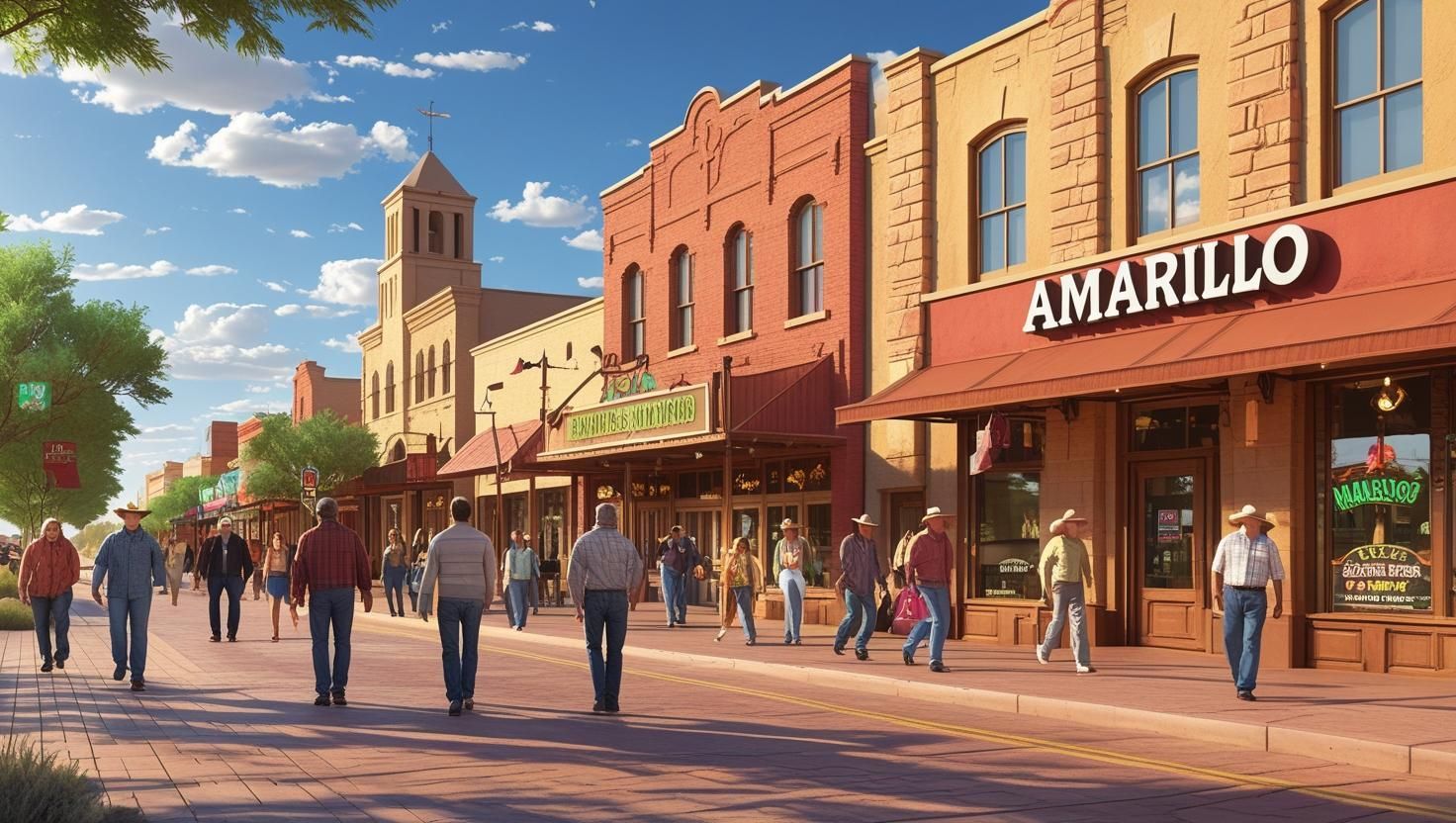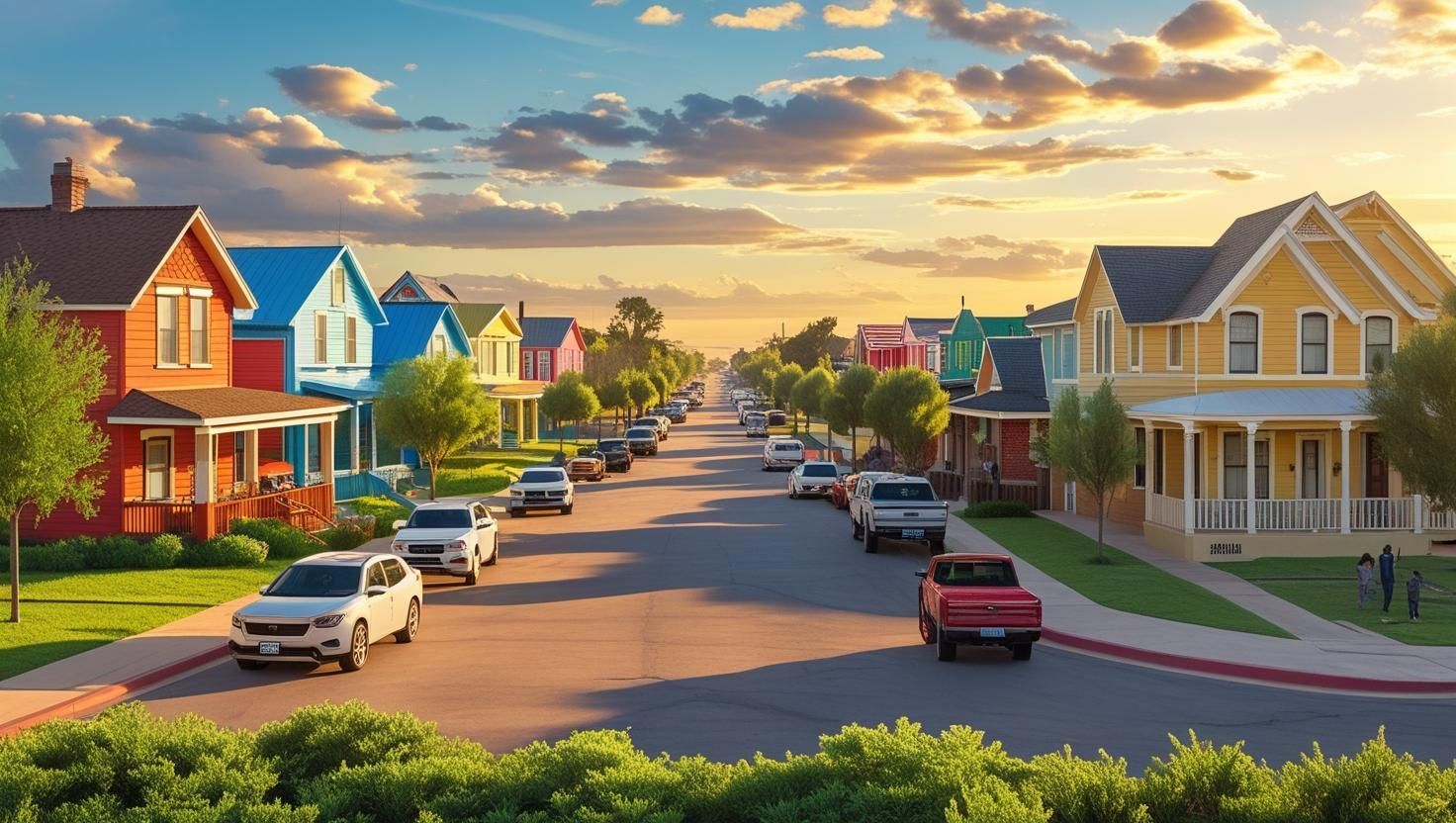Cost of Living in Amarillo, TX in 2025: A Complete Guide for New Residents
If you’re considering a move to Amarillo or already call it home, understanding the cost of living here can make a big difference in how you budget and plan. The city combines affordability with a friendly community feel, which is why more people are looking to settle down in this part of Texas.
If you’re planning your relocation, our guide to the Best Moving Companies in Amarillo can help you find trusted professionals to make your move smoother and stress-free.
For anyone relocating, having access to reliable self storage in Amarillo can also make the transition easier as you figure out housing and settle into a new routine. Let’s break down the major expenses so you know what to expect.
Why Amarillo is on People’s Radar
Amarillo has long been known for its Western heritage and wide-open spaces. Still, it’s also becoming a destination for families, retirees, and young professionals seeking a lower cost of living.
The city is large enough to provide modern amenities yet small enough to maintain a sense of community. Its location on the Texas Panhandle also means easy highway access to major cities while enjoying a slower pace of life and a much lower price tag than places like Dallas or Austin.
Amarillo at a Glance
Amarillo has a population of about 200,000 people, making it the largest city in the Texas Panhandle. The climate brings four distinct seasons, with hot summers, cold winters, and plenty of sunny days in between.
Its location along I-40 makes it a convenient hub for both travel and commerce. Residents often highlight the easy commutes and the balance of city conveniences with a more relaxed lifestyle.
Housing Costs
Housing is where Amarillo really stands out. The median home price hovers around $190,000, significantly lower than the national average and far more affordable than most Texas metros. Rental prices also remain attractive, with one-bedroom apartments averaging $800 to $900 per month and larger family homes renting for around $1,200 to $1,400, depending on location.
Neighborhoods like Wolflin and Olsen appeal to families with their established homes and strong community feel, while downtown offers newer apartments for young professionals. For those seeking more upscale living, areas like Colonies offer luxury housing that remains reasonably priced compared to larger cities.
Another perk is that Amarillo offers more land and larger lots than many other urban areas, making it appealing to people who value space without the steep price tag found elsewhere in Texas.
Utilities & Services
Monthly utility bills in Amarillo are moderate, averaging $150 to $200 for electricity, heating, cooling, water, and trash service. The internet typically costs about $60 to $70 per month. One factor to keep in mind is Amarillo’s weather—summers can mean higher air conditioning bills, while winters may bring a spike in heating costs.
Planning for seasonal fluctuations will help keep your budget on track.
Food & Groceries
Grocery prices in Amarillo are below the national average, which helps stretch household budgets. A gallon of milk is usually around $3.50, and a loaf of bread runs close to $2. Dining out is also affordable, with casual restaurants averaging $12–$15 per meal and mid-range restaurants averaging $40–$50 for two people.
The city has a broad mix of dining options, from well-loved Tex-Mex spots to family-owned barbecue joints. Chains like United Supermarkets and Walmart are standard for everyday shopping, but many locals also support farmers’ markets and smaller specialty shops. Dining culture here reflects the region—hearty, affordable, and welcoming.
For newcomers, Amarillo’s food scene is a great way to experience the local community without straining your wallet. For cost comparisons across cities, BestPlaces is another helpful resource.
Transportation Costs
Owning a car is the primary way people get around Amarillo since public transportation is limited. Gas prices are usually lower than the national average, sitting around $3 per gallon, though this fluctuates.
Car insurance runs between $1,200 and $1,500 annually, depending on age, driving history, and coverage. The good news is that commute times are short—averaging about 17 minutes, which is much less than in bigger Texas cities.
Healthcare Expenses
Healthcare costs in Amarillo are in line with national averages. A typical doctor’s visit may cost around $120 without insurance, while dental cleanings range from $80 to $120.
Amarillo is home to quality healthcare providers, including BSA Health System and Northwest Texas Healthcare System, which offer full-service hospitals and specialty care.
Taxes in Amarillo
Texas has no state income tax, which is a significant savings compared to many other states. However, property taxes in Amarillo are higher than the national average, averaging around 1.8% of a home’s assessed value.
Sales tax in Amarillo is 8.25%, the same as in most other parts of Texas. For many residents, the lack of state income tax offsets the property tax burden.
Education Costs
Amarillo’s public schools are part of the Amarillo Independent School District, which offers a range of highly rated schools. Families looking at private education will find tuition ranging from $6,000 to $10,000 per year, depending on grade level and institution.
Amarillo College provides an affordable higher education option locally, while West Texas A&M University in nearby Canyon offers four-year degrees and graduate programs at competitive rates.
Entertainment & Lifestyle Costs
Entertainment in Amarillo is affordable and varied. Movie tickets cost around $10 to $12, gym memberships average $35 to $45 per month, and family outings like the Amarillo Zoo or Wonderland Amusement Park are reasonably priced.
Beyond the basics, Amarillo also has a strong cultural side. The Amarillo Museum of Art, Globe-News Center for the Performing Arts, and local theater productions add variety at affordable prices. Sports fans enjoy minor league baseball games with inexpensive tickets, and outdoor enthusiasts can take advantage of Palo Duro Canyon State Park just 30 minutes away for a small entrance fee.
These options make it easy for residents to stay active and engaged without overspending.
Employment, Salaries & Income
Amarillo’s job market is steady, with major industries including healthcare, agriculture, energy, and manufacturing. The average household income is around $55,000, which aligns well with the city’s lower cost of living.
Top employers include Tyson Foods, Pantex, and the BSA Health System. While salaries may be lower than in larger metros, the affordable housing and overall lower expenses create a strong balance.
Pros & Cons of Living in Amarillo
Living in Amarillo comes with many advantages. Housing and groceries are affordable, the community is welcoming, and commute times are short. The city also boasts a growing arts and cultural scene, offering additional lifestyle options.
On the flip side, Amarillo experiences weather extremes, from windy days to hot summers and icy winters. Public transportation is limited, and higher education opportunities within the city are fewer compared to larger Texas hubs.
That said, many residents find the trade-offs worth it for the cost savings and quality of life.
How Amarillo Compares to Other Texas Cities
Compared to Austin, Dallas, or Houston, Amarillo’s cost of living is significantly lower. Median home prices in those cities often exceed $350,000, while Amarillo remains under $200,000.
Utility and transportation costs are similar, but the most significant difference comes in housing and overall affordability. For those who don’t need big-city amenities, Amarillo provides better value for money.
Tips for Managing the Cost of Living
To make the most of Amarillo’s affordability, residents often budget carefully for housing and utilities. Using self storage can help reduce clutter and provide flexibility during a move, especially when downsizing or transitioning between homes.
Neighborhoods like Sleepy Hollow and Hillside Terrace offer solid value for families, while downtown rentals give young professionals easy access to city life. Planning and taking advantage of Amarillo’s low costs can make life here even more comfortable.
Conclusion: Is Amarillo Affordable for You?
The cost of living in Amarillo, TX, makes it an attractive option for families, retirees, and individuals seeking a lower-cost lifestyle without compromising quality. Housing is affordable, everyday expenses are manageable, and the community provides a welcoming atmosphere.
While it has its challenges, the trade-offs are often outweighed by the benefits. If you’re moving to town and need some flexibility while finding the right home, havingAmarillo storage options can make the process smoother. For many people, Amarillo isn’t just affordable—it’s a place that feels like home.




